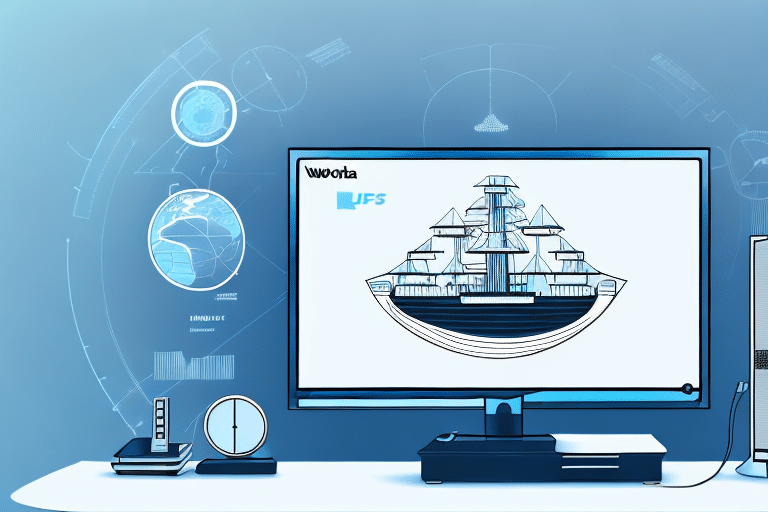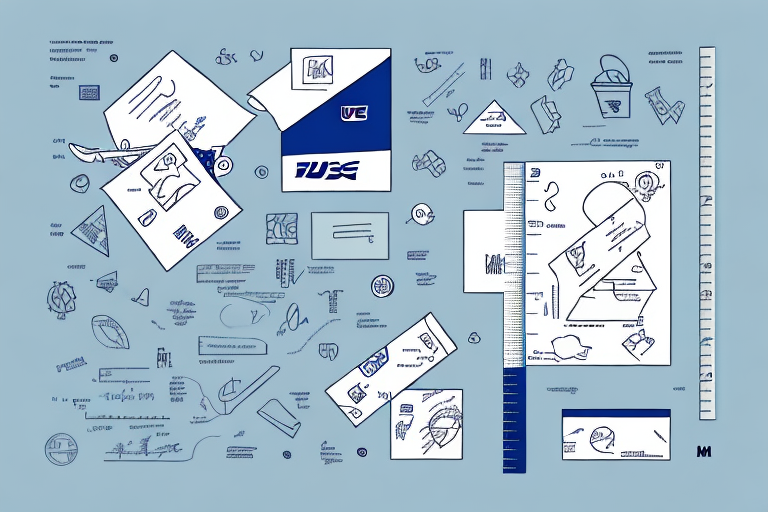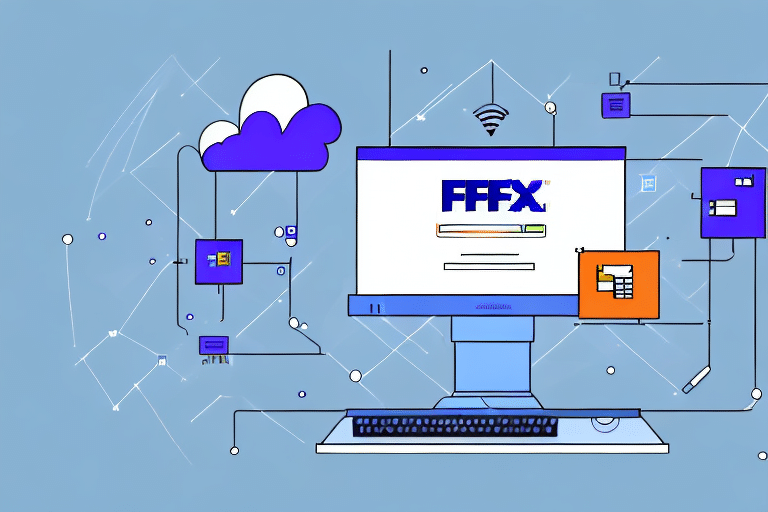When it comes to managing your shipment process, ensuring that you have set up the appropriate package types is critical. The UPS WorldShip software provides a range of package types to choose from, depending on the size, shape, and weight of your items. In this article, we will walk you through the importance of setting up package types in UPS WorldShip and provide a step-by-step guide to configuring them. We will also cover customizing, troubleshooting, and optimizing package types to streamline your shipping process and improve customer satisfaction.
Understanding the Importance of Setting Up Package Types in UPS WorldShip
The package type you choose plays a key role in determining the shipping cost, delivery time, and overall efficiency of your shipment process. It is vital to select the most appropriate package type for your items, as this will help prevent damage, ensure timely delivery, and minimize cost. The UPS WorldShip software provides a comprehensive list of package types that cater to a range of items, from small envelopes to large freight shipments. By using the right package type, you can improve your shipment process's overall effectiveness and contribute to your bottom line's success.
When selecting a package type, it is important to consider the nature of your items. For example, fragile items may require special packaging, such as bubble wrap or foam inserts, to prevent damage during transit. Similarly, perishable items may require insulated packaging to maintain their freshness during shipping. By selecting the appropriate package type, you can ensure that your items arrive at their destination in the same condition they were in when they left your facility.
In addition to selecting the right package type, it is also important to accurately measure and weigh your items. This information is used to calculate the shipping cost and ensure that the package is not rejected or delayed due to incorrect measurements. The UPS WorldShip software provides tools to help you accurately measure and weigh your items, ensuring that you select the most appropriate package type and avoid any unnecessary delays or costs.
Step-by-Step Guide to Configuring Package Types in UPS Shipping Software
Setting up package types in UPS WorldShip is a straightforward process, provided you have the necessary information about the items you plan to ship. Here is a step-by-step guide to configuring your package types:
- Open the UPS WorldShip software and click on the "Ship" tab.
- Choose the "Package" option and select the appropriate package type from the drop-down menu.
- Enter the dimensions and weight of your item in the corresponding fields. If you're unsure about the weight, use a reliable scale to avoid inaccurate shipping costs.
- If you're shipping items that require special handling, such as hazardous materials or perishable goods, select the relevant package type from the list of options.
- Once you have entered all the necessary information, click "OK" to save your package type. You can now use it for all your future shipments.
It's important to note that UPS offers a variety of package types to choose from, including envelopes, boxes, and tubes. Each package type has its own set of size and weight restrictions, so be sure to select the appropriate option for your shipment. Additionally, UPS provides guidelines for packaging and labeling your items to ensure they arrive safely and on time. Take the time to review these guidelines before shipping to avoid any delays or damages to your package.
How to Customize Package Types for Your Business Needs in WorldShip
If you have unique items that don't fit the standard package types available in WorldShip, you can create your package type to cater to your specific business needs. Here are the steps to customize your package type:
- Click on the "Package" option, and select "Package Type Editor" from the drop-down menu.
- Click on the "New" button and enter the required dimensions and weight for your customized package type.
- You can also customize the package type's name to reflect your item's specific attributes, such as fragile, oversized, etc.
- Ensure that you save your new package type before using it for your shipments.
Customizing your package types can help you save time and money in the long run. By creating a package type that fits your unique items, you can avoid having to use multiple boxes or paying for oversized shipping fees. Additionally, having a customized package type can help ensure that your items arrive safely and securely at their destination.
It's important to note that creating a new package type may require additional testing and validation to ensure that it meets shipping regulations and standards. Be sure to consult with your shipping carrier or logistics provider before implementing any new package types into your shipping process.
Benefits of Setting Up Package Types for Shipment Processing Efficiency
By setting up the appropriate package types, you can improve your shipment process's overall efficiency in the following ways:
- Reduced shipping costs: The right package type helps you avoid overpaying for shipping costs and eliminates the need for repackaging or additional handling charges.
- Enhanced shipment tracking: Package types help improve shipment visibility and tracking by providing accurate weight and dimension data.
- Reduced transit time: The correct package type reduces the likelihood of delays or damages to your items, ensuring timely delivery.
- Improved customer satisfaction: By using the right package type, you can provide your customers with a hassle-free delivery process, minimize damage, and increase satisfaction.
It is important to note that setting up package types also allows for better organization and management of your inventory. By having a clear understanding of the types of packages you use, you can optimize your warehouse space and reduce the risk of errors in picking and packing. Additionally, having a standardized package type system can make it easier to train new employees and ensure consistency in your shipment process.
Troubleshooting Common Issues with Package Types in UPS WorldShip
Despite configuring your package types correctly, you may encounter some issues that require troubleshooting. Here are some of the common issues you may face:
- Invalid weight or dimension data: This can result in inaccurate shipping costs and/or delay processing time. Verify that all information is correct before submitting your shipment.
- Package too large or too heavy: Some package types have size and weight restrictions. Ensure that you choose a package type that accommodates your item's measurements.
- Incomplete labeling: Ensure that you print all necessary labels, including the barcode, tracking number, and weight, to avoid delays or loss of shipment.
Best Practices for Managing and Updating Package Types in UPS Shipping Software
To ensure that your package types remain accurate and up-to-date, consider the following best practices:
- Periodically review your package types to ensure that they align with your current inventory and shipping needs.
- Ensure that you have the latest version of UPS WorldShip software to take advantage of package type updates and new features.
- Train your staff on how to select and use the right package types to avoid costly errors.
Optimizing Shipping Costs by Using the Right Package Type in WorldShip
By selecting the appropriate package type, you can optimize your shipping costs and contribute significantly to your bottom line. Here are some tips to consider:
- Choose the lightest, most compact package type that can safely accommodate your item to reduce shipping costs.
- Consider using flat rate or regional rate boxes for items that qualify. These are usually cheaper and offer the same delivery time as standard shipping.
- Opt for ground shipping instead of expedited if time is not a top priority. Ground shipping is cheaper and still reliable.
How to Print Labels and Documentation for Different Package Types in UPS WorldShip
Printing the necessary labels and documentation is essential when shipping your items. Here is how to print the correct labels and documentation for different package types:
- Select the package type you want to use and enter all necessary information, such as weight, dimensions, and special handling.
- Click on the "Label" option and choose the appropriate label format for your printer.
- Print all necessary documentation, such as customs forms, packing slips, and invoices, if applicable.
Integrating WorldShip Package Types with Other Shipping Software and Tools
If you use other shipping software and tools, it is essential to ensure that your package types can integrate with them seamlessly. The UPS WorldShip software can integrate with other tools such as ShipStation, QuickBooks, and Shopify, among others. This allows you to manage your shipment process more efficiently and avoid duplicating efforts in updating package types.
Tips for Streamlining Your Shipping Process with Customized Package Types in UPS WorldShip
Customized package types can help you optimize your shipment process, improve accuracy, and enhance customer satisfaction. Here are some tips to consider:
- Ensure that your customized package types align with your inventory and shipment needs to avoid inaccurate shipping costs or delays.
- Label your customized package types correctly to avoid confusion and ensure accurate tracking and delivery.
- Train your staff on how to use customized package types correctly to avoid errors and delays.
Enhancing Customer Satisfaction by Choosing the Right Packaging Type for Your Products
The right package type can contribute significantly to your customers' satisfaction and loyalty. By choosing an appropriate package type, you can minimize damage, ensure timely delivery, and improve overall customer experience. Consider the following when selecting a package type:
- Choose a package type that can accommodate your item's size, weight, and shape without compromising its safety.
- Oversize or overweight items may require specialized packaging to avoid damage or loss.
- Consider using protective packaging materials such as bubble wrap, foam, or air pillows to protect fragile items.
How to Monitor and Analyze Shipment Data Using Package Types in WorldShip
The UPS WorldShip software allows you to analyze your shipment data using package types easily. This can help you identify trends, assess cost-effectiveness, and optimize your shipment processes further. Here is how to monitor and analyze your shipment data:
- Click on the "History" tab and select the shipment you want to analyze.
- Click on the "View Shipping History" option, and select the package type you want to analyze.
- You can now view relevant tracking information, such as weight, dimension, shipping cost, and delivery status.
- Use this data to identify areas for improvement and optimize your shipment process for greater efficiency.
Understanding the Impact of Environmental Sustainability on Your Choice of Packaging Type
Environmental sustainability is a critical consideration when choosing a packaging type. Consider choosing biodegradable, reusable, or recyclable packaging materials to minimize environmental impact. You can also choose packaging material made from sustainable sources such as bamboo, cornstarch, or plant-based materials.
Staying Compliant with Legal Regulations while Setting Up Package Types in UPS Shipping Software
It is critical to follow legal regulations when setting up your package types to avoid penalties and ensure safety. Check with local and international regulations for packaging and labeling requirements for shipments that may contain hazardous materials or other dangerous goods.
Setting up package types in UPS WorldShip software is essential for optimizing your shipment process, minimizing costs, and improving customer satisfaction. Following the steps outlined above, you can set up, customize, and troubleshoot package types to streamline your shipment process and achieve your shipping goals.









